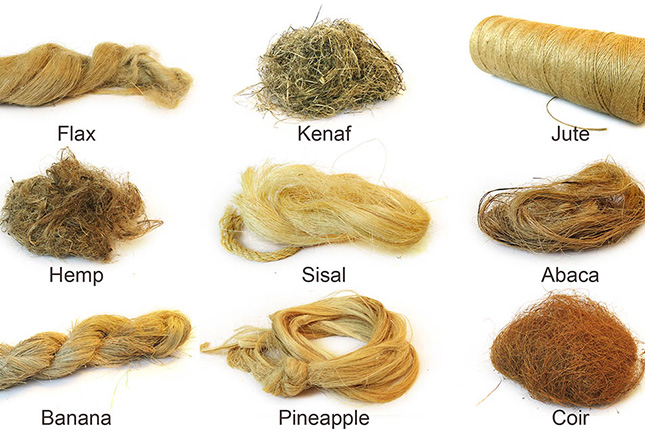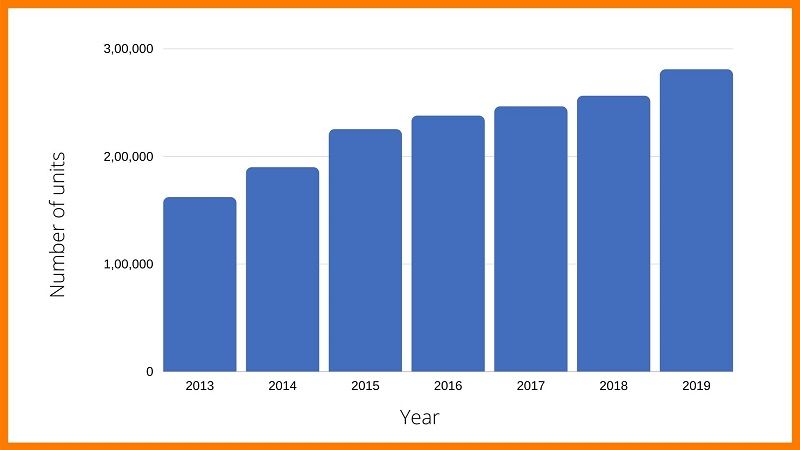The Future Of Natural Fiber Composites: A Global Market Forecast To 2029

Table of Contents
Market Drivers and Growth Projections for Natural Fiber Composites
The natural fiber composites market is experiencing robust growth, fueled by several key factors. This section will delve into the major market drivers and provide projections for the coming years.
Increasing Demand for Sustainable Alternatives: The world is increasingly aware of the environmental impact of traditional materials. Consumers and regulators are pushing for eco-friendly alternatives, making natural fiber composites an attractive option.
- Reduced carbon footprint: Natural fibers require significantly less energy to produce than synthetic counterparts, leading to a lower carbon footprint.
- Biodegradable properties: Many natural fibers are biodegradable, reducing landfill waste and environmental pollution.
- Renewable resource utilization: Natural fibers are derived from renewable resources like flax, hemp, jute, and bamboo, ensuring sustainable supply.
- Compliance with environmental regulations: The increasing stringency of environmental regulations, such as REACH and RoHS, is driving the adoption of natural fiber composites as they comply more easily.
Industries like automotive, construction, and packaging are already seeing a shift towards natural fiber composites. For example, the automotive industry is using natural fiber reinforced plastics in interior components to reduce weight and improve fuel efficiency.
Technological Advancements and Innovation: Significant breakthroughs in processing techniques and material science are enhancing the performance and cost-effectiveness of natural fiber composites.
- Improved fiber extraction methods: Advances in fiber extraction are leading to higher quality fibers with improved mechanical properties.
- Novel resin systems: The development of bio-based resins and improved compatibility with natural fibers is expanding application possibilities.
- Advancements in composite manufacturing processes: Innovations in manufacturing techniques, including injection molding and compression molding, are enabling mass production of high-quality natural fiber composite parts.
Research and development efforts are continuously improving the properties of natural fiber composites, making them competitive with traditional materials. For example, the development of novel surface treatments is enhancing the bonding between fibers and resins, leading to increased strength and durability.
Cost-Effectiveness and Competitive Pricing: Natural fiber composites offer a compelling economic advantage compared to traditional synthetic materials.
- Lower raw material costs: Natural fibers are often cheaper than synthetic fibers, leading to lower material costs.
- Reduced energy consumption during manufacturing: The manufacturing process of natural fiber composites generally consumes less energy, reducing production costs.
- Potential for localized production: The use of locally sourced natural fibers can reduce transportation costs and support local economies.
A comparative cost analysis shows that natural fiber composites can be significantly more cost-effective, especially for high-volume applications. This makes them a particularly attractive option for price-sensitive markets.
Key Applications and Market Segmentation of Natural Fiber Composites
The versatility of natural fiber composites makes them suitable for a wide range of applications across various industries. This section will explore some key market segments.
Automotive Industry: The automotive sector is a significant adopter of natural fiber composites. Their lightweight nature offers considerable benefits.
- Reduced vehicle weight: Replacing traditional materials with natural fiber composites leads to lighter vehicles.
- Improved fuel economy: Lighter vehicles consume less fuel, contributing to lower emissions.
- Lower emissions: Reduced fuel consumption directly translates to lower greenhouse gas emissions.
- Cost savings: The lower cost of natural fibers can lead to significant cost savings in vehicle manufacturing.
Natural fiber composites are used in various automotive parts, including interior components like dashboards and door panels, as well as structural components in some vehicle models.
Construction and Building Materials: Natural fiber composites are gaining traction in the construction industry due to their sustainability and performance characteristics.
- Improved thermal insulation: Natural fibers provide excellent thermal insulation, reducing energy consumption for heating and cooling.
- Sound insulation: Natural fiber composites can effectively reduce noise pollution within buildings.
- Enhanced structural integrity: When properly engineered, natural fiber composites can contribute to the structural strength of buildings.
- Sustainable building practices: The use of natural fiber composites aligns with sustainable building practices and contributes to green building certifications.
Applications include insulation materials, structural panels, and even load-bearing components in certain building designs.
Packaging and Consumer Goods: The biodegradability and recyclability of natural fiber composites make them ideal for eco-friendly packaging solutions.
- Eco-friendly packaging solutions: Replacing plastic packaging with natural fiber composites reduces plastic waste.
- Reduced waste: Biodegradable packaging reduces the environmental burden of waste disposal.
- Compostability: Many natural fiber composites are compostable, further reducing environmental impact.
- Improved brand image: Using sustainable packaging materials enhances a company's brand image and appeals to environmentally conscious consumers.
Examples include food packaging, consumer product packaging, and even disposable tableware.
Challenges and Future Outlook for Natural Fiber Composites
Despite the numerous advantages, several challenges need to be addressed to ensure the continued growth of the natural fiber composites market.
Addressing Performance Limitations: Compared to some synthetic composites, natural fiber composites can exhibit limitations in terms of moisture absorption, dimensional stability, and mechanical strength.
- Improved durability: Ongoing research focuses on enhancing the durability and longevity of natural fiber composites.
- Water resistance: Improving water resistance is crucial for applications exposed to moisture.
- Enhanced mechanical properties: Research is aimed at improving the mechanical properties such as tensile strength and stiffness.
- Research and development initiatives: Significant R&D efforts are dedicated to overcoming these limitations.
Innovative surface treatments and resin systems are being developed to address these performance limitations.
Supply Chain and Infrastructure Development: A robust and sustainable supply chain is crucial for the widespread adoption of natural fiber composites.
- Sustainable sourcing of raw materials: Ensuring sustainable sourcing practices is vital for maintaining the environmental benefits.
- Efficient processing facilities: Efficient processing facilities are needed to convert raw materials into high-quality fibers.
- Logistics and distribution networks: Efficient logistics and distribution networks are necessary to deliver materials to manufacturers.
Investments in sustainable sourcing and efficient processing are key to the growth of the industry.
Standardization and Regulation: The establishment of clear standards and regulations is essential for ensuring the quality and consistency of natural fiber composites.
- Industry standards: Industry-wide standards will help ensure quality and performance consistency.
- Quality control measures: Robust quality control measures are needed to maintain product quality.
- Regulatory compliance: Compliance with relevant regulations is essential for market acceptance.
- Certification schemes: Certification schemes can help consumers identify genuine and high-quality products.
Harmonized standards and regulations will facilitate greater market acceptance and drive industry growth.
Conclusion
The future of natural fiber composites is bright, driven by increasing demand for sustainable materials and continuous technological advancements. The market is poised for significant growth, with diverse applications across various industries. While challenges remain, ongoing research and development efforts, coupled with improvements in supply chains and regulatory frameworks, will pave the way for wider adoption of these eco-friendly alternatives. To stay ahead in this rapidly evolving market, understanding the market trends and future prospects of natural fiber composites is crucial. Learn more about the potential of natural fiber composite materials and their impact on sustainability by exploring our detailed reports and market analyses. Invest wisely in the future of biocomposites and the sustainable materials revolution.

Featured Posts
-
 Sheffield United Escapes Red Card In Tense Leeds United Clash
May 13, 2025
Sheffield United Escapes Red Card In Tense Leeds United Clash
May 13, 2025 -
 Chinas Impact On Bmw And Porsche Sales A Market Analysis
May 13, 2025
Chinas Impact On Bmw And Porsche Sales A Market Analysis
May 13, 2025 -
 K 80 Letiyu Pobedy Novye Vyplaty Dlya Veteranov Eao
May 13, 2025
K 80 Letiyu Pobedy Novye Vyplaty Dlya Veteranov Eao
May 13, 2025 -
 Venezia Vs Atalanta Laga Imbang Tanpa Gol Jay Idzes Main Penuh
May 13, 2025
Venezia Vs Atalanta Laga Imbang Tanpa Gol Jay Idzes Main Penuh
May 13, 2025 -
 Zber Dat Pre Atlas Romskych Komunit Klucove Informacie Pre April
May 13, 2025
Zber Dat Pre Atlas Romskych Komunit Klucove Informacie Pre April
May 13, 2025
